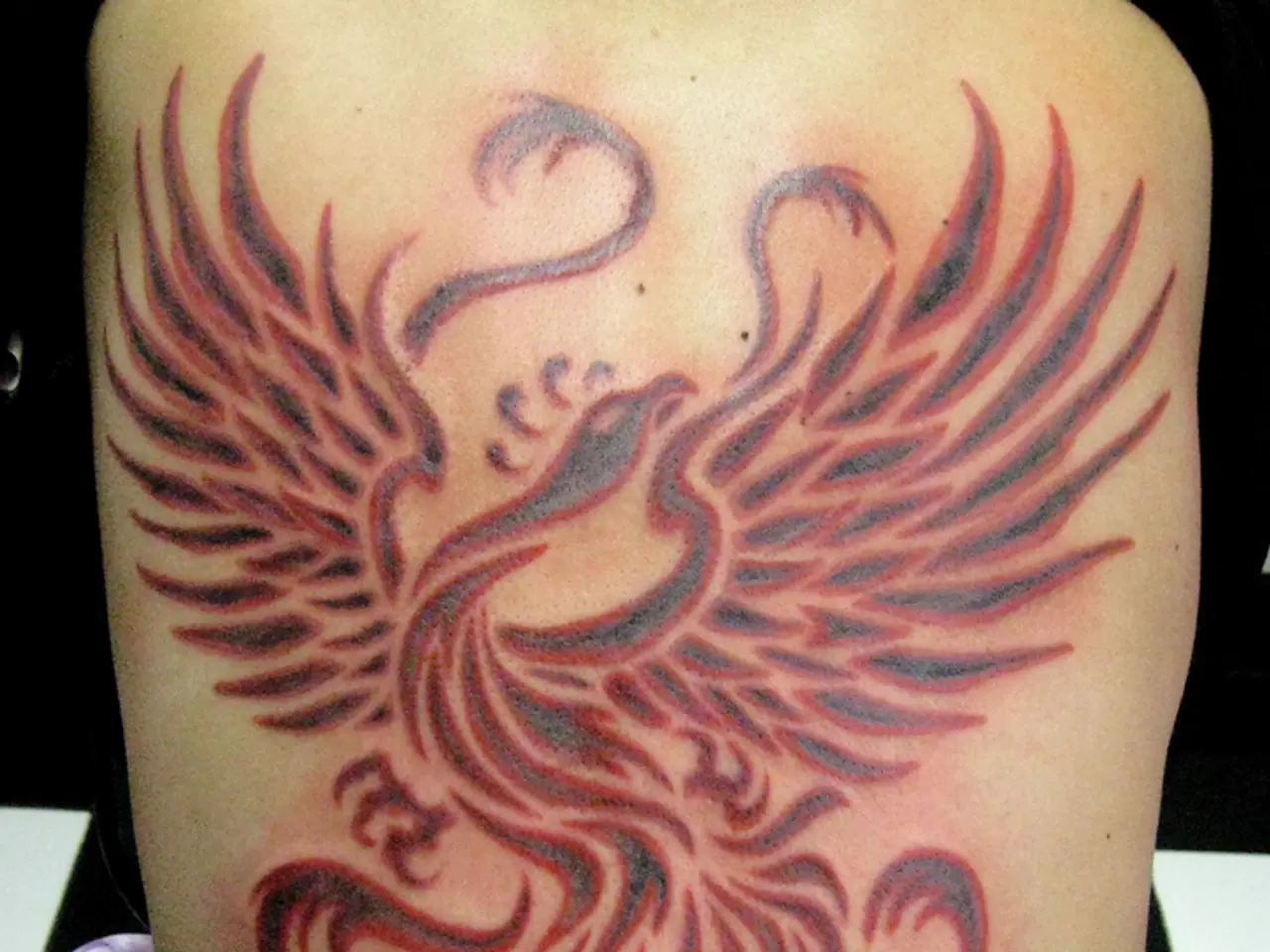Transformation of Ink Artistry: From Dark Shadows to Radiant Lights through Laser Tattoos
Effective and Safe Laser Tattoo Removal: A Comprehensive Guide
Laser tattoo removal has become a popular method for removing unwanted ink, but it's crucial to understand the key factors that ensure effective and safe results. This article explores the essential elements of laser tattoo removal, including the choice of laser wavelength and type, skin type, and the number of treatment sessions.
Wavelength and Laser Type
Different laser wavelengths target specific ink colors more effectively. Modern technologies like picosecond lasers, such as PicoSure, use ultra-short pulses that break tattoo ink into smaller particles with less heat, minimizing damage to surrounding skin and reducing scarring risk. PicoSure lasers can tackle difficult colors like blues and greens and are suitable for a wider range of skin types compared to traditional Q-switched lasers.
Skin Type
The skin tone affects laser choice and settings because darker skin contains more melanin, which can absorb laser energy leading to pigmentation changes or burns. Advanced lasers like PicoSure offer more precision, reducing side effects and being safer for various skin types. A consultation and patch test help ensure suitability and minimize complications.
Number of Sessions
Multiple sessions are usually required, typically 5 to 10 sessions spaced 6 to 8 weeks apart, to allow the immune system to flush out fragmented ink. The total number depends on tattoo factors such as color, age, size, ink density, and ink depth. Older tattoos and darker colors can fade more easily and potentially need fewer treatments, while bright, pastel colors and deeply embedded ink often require more sessions.
Additional Considerations
Ink density is the most significant factor influencing removal success, followed by tattoo location, age, and design style. Proper aftercare is crucial to minimize side effects, which can include redness, swelling, blistering, and temporary pigmentation changes.
Industry Regulation
Kristina Dupont, a tattoo removal specialist and founder of Studio K, advocates for government regulation in the tattoo removal industry due to a lack of regulation in many medical-aesthetic fields. Derek Marandola, a tattoo removal specialist in Montreal, uses a cooling machine during treatment to reduce pain, while R. Rox Anderson, a dermatologist at the Wellman Center, also invented laser hair removal and cryolipolysis (CoolSculpting).
Tattoo Characteristics
Black ink, commonly used for tattoos, is the easiest to remove. Tattoo artists find it easier to remove tattoos on lighter skin tones. Before starting their careers as tattoo removal specialists, Derek Marandola was an electrician, and Kristina Dupont was a psychoeducator. Caroline Boudoux, a physicist who trained at Harvard and became a professor at Polytechnique Montreal, advises getting a tattoo in black if unsure about the choice, in an area that never sees the sun.
Removal Process
Laser tattoo removal breaks the pigments to allow macrophages to absorb them. The Wellman Center for Photomedicine at Harvard refined the tattoo removal laser. A single session of tattoo removal takes only a few minutes, but multiple sessions are required to complete the process. The time between sessions is six to eight weeks, and aftercare instructions must be followed, including avoiding the sun.
- Government regulation in the tattoo removal industry is advocated for by experts due to the lack of regulation in many medical-aesthetic fields, such as the case of Kristina Dupont, a tattoo removal specialist and founder of Studio K.
- Wide-ranging skin types can be suitably treated with advanced lasers like PicoSure, given their precision and reduced risk of side effects, unlike traditional Q-switched lasers that might not handle a variety of skin types as effectively.
- Most home and garden, health-and-wellness, and fashion-and-beauty enthusiasts should know that the removal of black tattoos is relatively easier compared to those with bright, pastel colors or deeply embedded ink, which may require more intense therapies and treatments.
- In a comprehensive guide on effective and safe laser tattoo removal, an essential point to consider is the number of treatment sessions, typically ranging from 5 to 10 sessions spaced 6 to 8 weeks apart, depending on factors like tattoo size, age, and ink density.




